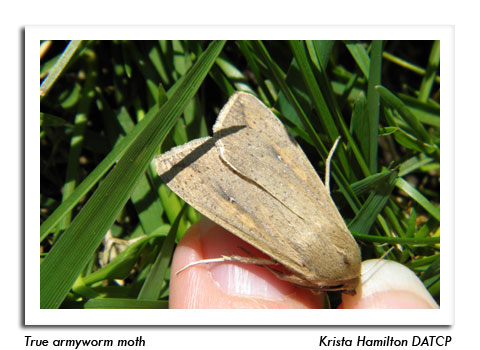
 |
|
|
Corn
Volume 58 Number 5 Date 05/30/2013 EUROPEAN CORN BORER - The emergence of spring moths theoretically continued for the second week, although no moths were registered in black light traps. The phenology model for this pest suggests egg deposition is beginning in areas of the state where 450 degree days (modified base 50°F) have accumulated, including Beloit and Lancaster. At current temperatures, the first flight could peak by June 14 in the southern counties, June 21 in the central counties and about one week later in the north. TRUE ARMYWORM - Field conditions have become increasingly favorable for localized infestations of this insect and the black cutworm. Crop advisors and growers should continue to monitor corn and small grains throughout June. Small larvae have been noted in alfalfa in the past two weeks, but no significant armyworm problems have been observed or reported as of May 30. BLACK CUTWORM - Larvae resulting from the spring migration are now in the damaging late-instar stages in portions of southern Wisconsin. Signs of cutworm activity, such as small, irregular holes in the leaves and cut plants should become evident in infested fields next week. Many corn fields are at increased risk of attack this season as a result of delayed planting and late weed control. These fields should be closely monitored for cutworm feeding through the four-leaf stage. Early detection of cutworm problems is critical for insecticide treatments to be effective and economical. The threshold for corn is 3% of plants damaged. -- Krista Hamilton, DATCP Entomologist CORN EARWORM - A moderate migration risk is in the forecast for southern Wisconsin from May 29-31 as south to southwest winds increase ahead of a cold frontal boundary. Corn is not at a critical growth stage where corn earworm damage can occur, but host plants may serve as breeding grounds for any migrating first generation moths. Growers monitoring early-season moth activity will likely see scattered increases in counts in the next week. --Mike Sandstrom, insectforecast.com 



|
|
|